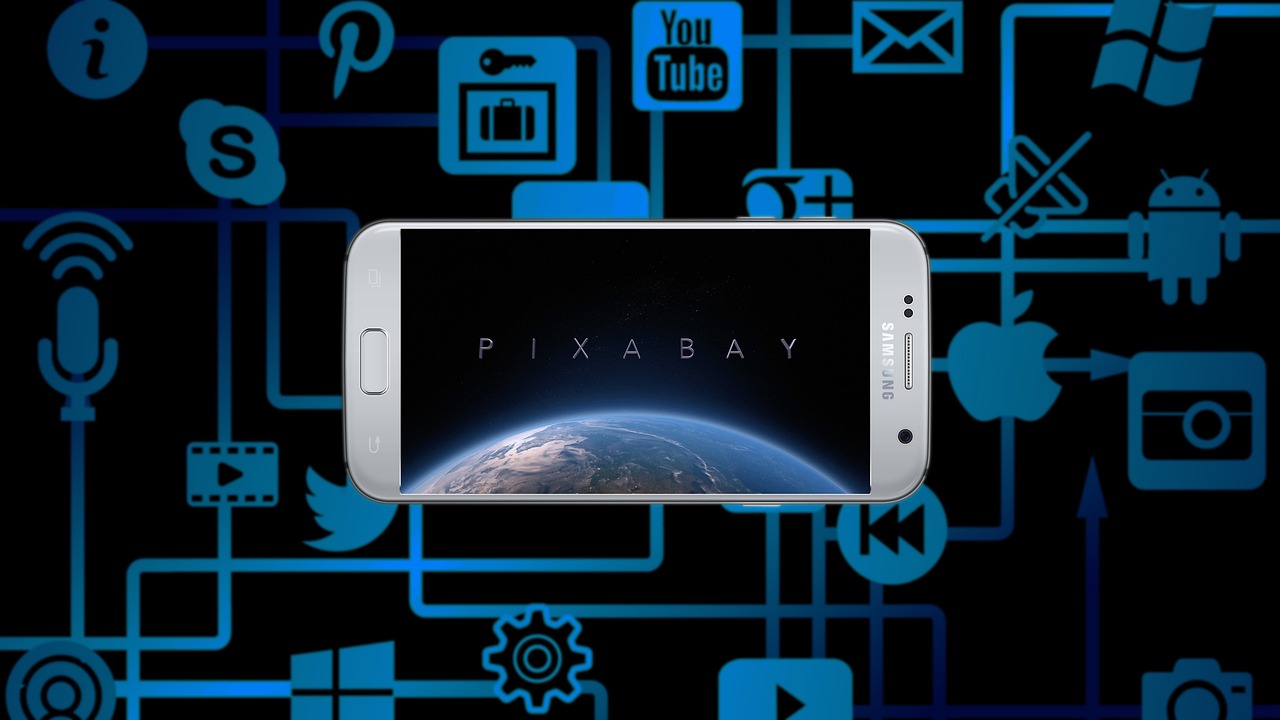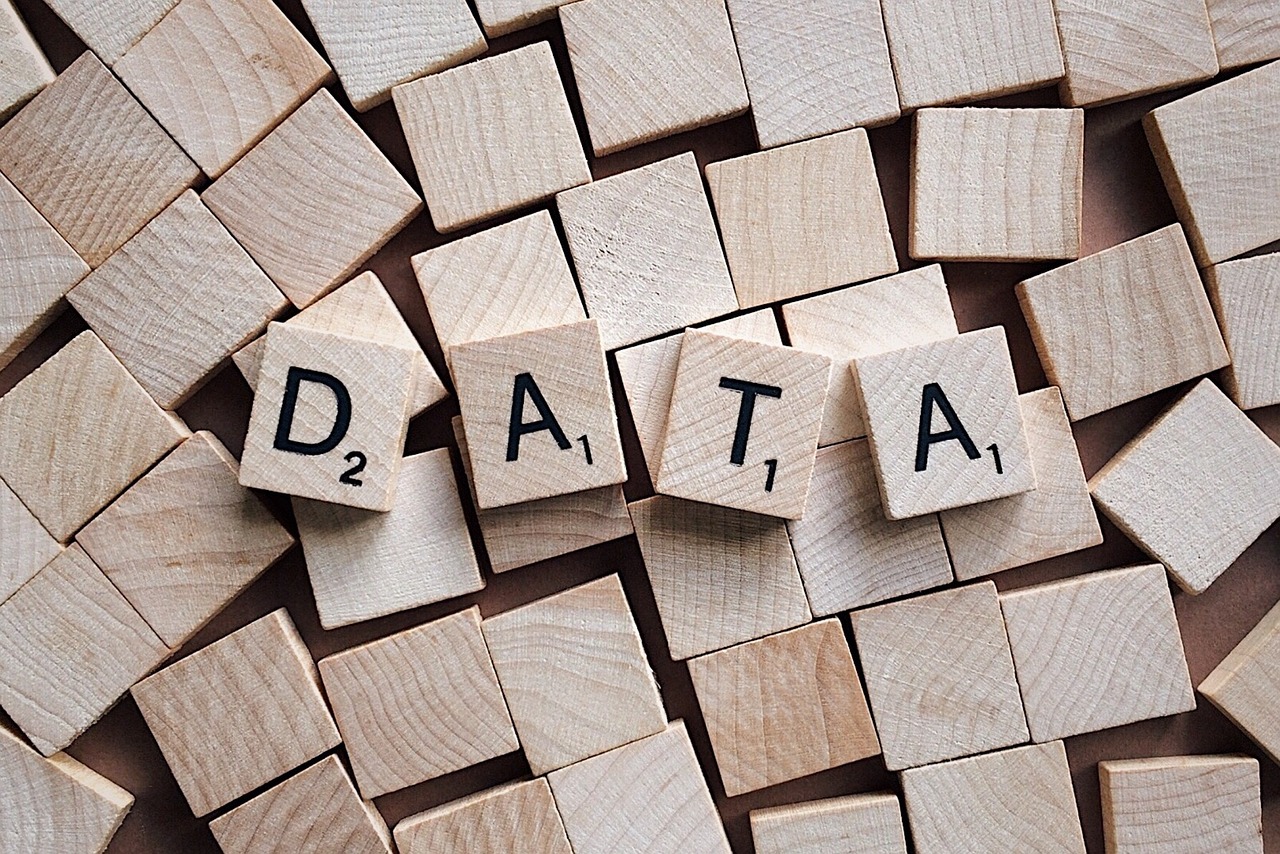How to Use Data Visualization in Research Presentations
In today's fast-paced world, where information overload is a daily challenge, data visualization has emerged as a powerful tool for researchers. It’s not just about presenting numbers and statistics; it’s about crafting a story that resonates with your audience. When done right, data visualization can transform complex information into clear, engaging visuals that leave a lasting impact. Imagine walking into a room filled with stakeholders, all eager to hear what you have to say, and with just a few well-crafted visuals, you capture their attention and convey your message with clarity. Sounds ideal, right?
So, how can you effectively integrate data visualization into your research presentations? The journey begins with understanding the importance of data visualization. It’s not merely an aesthetic choice; it enhances comprehension, retention, and engagement. When audiences are presented with visual representations of data, they can grasp intricate concepts in an instant. Instead of sifting through pages of text or tables, they can see the trends, patterns, and insights at a glance. This is where the magic happens—data becomes digestible.
Next, you’ll want to choose the right visualization tools. The software you select can significantly influence the quality of your presentation. There are numerous options available, each with its own unique features and capabilities. For instance, Tableau is renowned for its interactive dashboards, while Power BI excels in business analytics. By familiarizing yourself with these tools, you can find the perfect fit for your needs and elevate your presentation skills to new heights.
But it doesn’t stop there! Customizing your visuals to suit your audience is equally essential. Think about who will be in the room—what are their interests, and what level of understanding do they possess? Tailoring your graphics and charts not only enhances relatability but also boosts engagement. For example, if you’re presenting to a group of scientists, you might want to dive deeper into the data specifics. Conversely, if your audience consists of stakeholders who are more interested in high-level insights, a simplified approach might be more effective.
As you prepare your presentation, keep in mind the best practices for effective data presentation. Simplifying complex data is key. Instead of overwhelming your audience with a barrage of numbers, distill the information into clear, concise visuals. Use storytelling techniques to weave narratives around your data, creating a compelling and memorable experience. When your audience can connect emotionally with the data, they are more likely to remember your message long after the presentation ends.
Finally, it’s crucial to evaluate the impact of your visualizations. After your presentation, gather feedback and measure audience engagement. Did they seem interested? Were they able to grasp the key points? By assessing the effectiveness of your visualizations, you can continuously improve your presentation skills and ensure that you’re making a meaningful impact.
- What are the benefits of using data visualization in presentations?
Data visualization helps in simplifying complex data, enhancing audience engagement, and improving retention of information. - Which tools are best for data visualization?
Popular tools include Tableau for interactive dashboards, Power BI for business insights, and Google Data Studio for collaborative projects. - How can I customize visuals for my audience?
Understand your audience's background and tailor visuals accordingly, using appropriate levels of detail and complexity. - What are some best practices for effective data presentation?
Simplify data, incorporate storytelling, and maintain visual consistency throughout your presentation.

The Importance of Data Visualization
Understanding the significance of data visualization is crucial for researchers aiming to communicate their findings effectively. In a world overflowing with information, it can be overwhelming for audiences to sift through dense data sets. This is where data visualization shines, acting as a beacon that guides viewers through the fog of numbers and statistics. By transforming complex data into visually appealing graphics, researchers can enhance comprehension, retention, and engagement.
Imagine trying to understand a long list of numbers without any context—it's like trying to find your way in a foreign city without a map. Data visualization provides that map, allowing audiences to quickly grasp trends, patterns, and insights that would otherwise remain hidden. For instance, a well-constructed bar chart can reveal sales performance over time, while a pie chart can illustrate market share distribution among competitors. These visual tools not only make data more digestible but also more compelling.
Moreover, the psychological impact of visuals cannot be underestimated. Research shows that visuals are processed 60,000 times faster than text. This means that when you present data visually, your audience can absorb information more quickly and efficiently. This speed of processing is especially vital in research presentations, where time is often limited, and the stakes are high. By leveraging data visualization, you can ensure that your audience remains engaged and retains the key messages you want to convey.
Additionally, data visualization fosters interactivity and exploration. Tools like Tableau and Power BI allow presenters to create dynamic visuals that audiences can interact with, diving deeper into the data as they wish. This level of engagement not only keeps the audience interested but also empowers them to discover insights on their own, making the presentation a collaborative experience rather than a one-sided lecture.
In summary, the importance of data visualization in research presentations cannot be overstated. It transforms complex information into clear, engaging visuals that enhance understanding and retention. By using data visualization effectively, you can captivate your audience, foster interactivity, and ultimately drive home your research findings in a way that resonates long after the presentation is over.

Choosing the Right Visualization Tools
When it comes to delivering a research presentation that truly resonates, is like picking the perfect paintbrush for an artist. The tools you select can either enhance your message or muddle it, making it crucial to invest time in finding the ones that best fit your needs. Think of it as assembling a toolbox where each tool has a specific purpose, helping you convey your data in a way that captivates and informs your audience.
With a plethora of options available, it can be overwhelming to decide which software will work best for your specific situation. To simplify this process, consider the following factors:
- User-Friendliness: How easy is the tool to navigate? A user-friendly interface can save you time and reduce frustration, allowing you to focus on your data rather than struggling with the software.
- Data Compatibility: Ensure that the tool can handle the types of data you’re working with. Some tools excel at visualizing large datasets, while others may be better suited for smaller, more intricate data.
- Customization Options: Look for tools that offer a variety of customization features. The ability to tweak colors, fonts, and layouts can help you align your visuals with your presentation's theme.
- Collaboration Features: If you’re working in a team, consider tools that allow for easy sharing and collaboration. This can enhance the quality of your visuals through collective input.
To give you a clearer picture, let's take a look at some popular data visualization tools and their unique features:
| Tool | Key Features | Best For |
|---|---|---|
| Tableau | Interactive dashboards, drag-and-drop interface, real-time data analysis | Dynamic presentations with interactive elements |
| Power BI | Robust analytics, integration with Microsoft products, extensive reporting capabilities | Business insights and corporate presentations |
| Google Data Studio | Free to use, easy sharing, integration with Google products | Collaborative projects and quick visualizations |
Each of these tools has its strengths, and the best choice often depends on the specific requirements of your presentation. For instance, if your goal is to create an interactive experience that invites audience participation, Tableau might be your best bet. On the other hand, if you're presenting business data to stakeholders, Power BI could provide the analytical depth you need to make your case compelling.
Ultimately, the right visualization tool will not only enhance the clarity of your data but also engage your audience more effectively. So, take the time to explore these options and find the tool that aligns best with your presentation goals. Remember, the right tool can transform complex data into a story that your audience can easily understand and remember.

Popular Data Visualization Software
When it comes to data visualization, choosing the right software can make all the difference in how effectively you communicate your research findings. There are numerous tools available, each boasting unique features tailored to different needs. By understanding these options, you can select the one that best suits your presentation style and the complexity of your data. Let’s dive into some of the most popular data visualization software options that are widely used by researchers and professionals alike.
Tableau is one of the frontrunners in the world of data visualization. Known for its user-friendly interface and powerful analytics capabilities, Tableau allows you to create interactive dashboards that engage your audience. With drag-and-drop functionality, you can easily manipulate data and create stunning visuals that tell a story. Whether you are showcasing trends over time or comparing different datasets, Tableau’s versatility makes it a go-to choice for many. Plus, its ability to connect to various data sources means you can work with real-time data, enhancing the relevance of your presentations.
Next up is Power BI, a tool designed by Microsoft that excels in business intelligence and reporting. It integrates seamlessly with other Microsoft products, making it a convenient choice for organizations already using the Microsoft ecosystem. Power BI is particularly effective for creating detailed reports and dashboards that present data clearly and concisely. Its features include advanced analytics capabilities, allowing users to perform complex calculations and visualize the results effortlessly. This makes Power BI an excellent option for stakeholders who need to understand business metrics at a glance.
Another noteworthy tool is Google Data Studio. This free tool is perfect for those who are looking for an accessible entry point into data visualization. Google Data Studio allows users to create customizable reports and dashboards by pulling data from various Google services, such as Google Analytics and Google Sheets. Its collaborative features enable multiple users to work on the same report simultaneously, making it ideal for team projects. With a wide array of templates and visualization options, Google Data Studio is a fantastic choice for both beginners and experienced users.
To summarize, here’s a quick comparison of these popular data visualization tools:
| Software | Key Features | Best For |
|---|---|---|
| Tableau | Interactive dashboards, real-time data | Dynamic presentations |
| Power BI | Advanced analytics, Microsoft integration | Business insights |
| Google Data Studio | Free, customizable reports, collaborative | Team projects and beginners |
Choosing the right data visualization software ultimately depends on your specific needs and the preferences of your audience. Each of these tools has its strengths, so take the time to explore their features and see which one resonates with you. Remember, the goal is to present your data in a way that is not only informative but also engaging and easy to understand!

Tableau for Interactive Dashboards
Tableau has emerged as a powerhouse in the realm of data visualization, particularly when it comes to creating interactive dashboards. Imagine being able to present your data not just as static images, but as living, breathing entities that your audience can engage with. This interactivity allows viewers to explore the data on their own terms, diving deeper into the insights that matter most to them. It's like handing them the keys to a treasure chest of information, empowering them to uncover hidden gems that might otherwise go unnoticed.
One of the standout features of Tableau is its ability to connect to various data sources seamlessly. Whether your data resides in Excel, SQL databases, or cloud services, Tableau can pull it in effortlessly. This connectivity means you can create a comprehensive view of your research data, making it easier to spot trends and patterns. The user-friendly interface allows even those with minimal technical skills to create stunning visuals that tell a story.
With Tableau, you can design dashboards that are not only visually appealing but also highly functional. You can incorporate various elements such as:
- Charts and Graphs: Choose from a wide array of chart types, including bar charts, line graphs, and scatter plots, to best represent your data.
- Filters: Allow your audience to filter the data based on specific criteria, making the dashboard more personalized and relevant.
- Interactive Maps: If your data has a geographical component, Tableau’s mapping capabilities can bring your data to life, illustrating trends across different regions.
Moreover, Tableau’s drag-and-drop functionality makes it incredibly easy to create these dashboards. You don’t need to be a coding wizard to make your data shine. Just select the data points you want to visualize and drag them into your workspace. The software will automatically generate the most appropriate visual representation, saving you time and effort.
But what truly sets Tableau apart is its capacity for real-time data updates. As your data changes, so too can your visualizations. This feature is invaluable in research presentations where data is continually evolving. It ensures that your audience is always viewing the most current information, enhancing their understanding and engagement.
In summary, utilizing Tableau for interactive dashboards can transform your research presentations from mundane to magnificent. By allowing your audience to interact with the data, you not only enhance their understanding but also foster a deeper connection with your research. So, if you’re looking to elevate your presentation skills, consider diving into the world of Tableau. It might just be the game-changer you need.
Q: What types of data can I use with Tableau?
A: Tableau can connect to a wide variety of data sources including Excel, SQL databases, cloud services, and more, making it versatile for any research project.
Q: Do I need programming skills to use Tableau?
A: No, Tableau is designed to be user-friendly, with drag-and-drop functionality that allows anyone to create stunning visualizations without coding knowledge.
Q: Can I share my Tableau dashboards?
A: Yes, Tableau dashboards can be shared online or embedded in presentations, allowing others to interact with your data easily.

Power BI for Business Insights
Power BI is a powerful business analytics tool that transforms raw data into insightful and interactive visualizations. Imagine standing in front of a large canvas where every brushstroke represents a data point, and with each stroke, a clearer picture of your business emerges. That’s the essence of Power BI! It enables users to create stunning reports and dashboards that not only look good but also provide valuable insights for decision-making. By integrating multiple data sources, Power BI allows you to see the bigger picture of your business landscape, making it easier to identify trends, track performance, and make informed decisions.
One of the standout features of Power BI is its ability to handle large volumes of data and present it in a way that is digestible. This means you can take complex datasets and break them down into visual formats such as charts, graphs, and maps. For instance, you could visualize sales data across different regions, making it instantly clear where your business is thriving and where it may need some extra attention. The tool's drag-and-drop interface makes it user-friendly, allowing even those without a technical background to create compelling visuals.
Moreover, Power BI excels in its collaboration capabilities. Teams can share dashboards and reports seamlessly, ensuring that everyone is on the same page. This is particularly beneficial in a business environment where decisions need to be made quickly and based on the latest data. By fostering collaboration, Power BI not only enhances communication but also encourages a data-driven culture within organizations.
Another notable aspect of Power BI is its integration with other Microsoft products, such as Excel and Azure. This interoperability allows users to pull data from various sources, analyze it, and visualize it all within one platform. For example, if your sales team uses Excel for tracking leads, they can easily import that data into Power BI to create visual reports that highlight conversion rates and sales forecasts. This seamless integration streamlines workflows and saves valuable time.
To summarize, Power BI is not just a tool; it’s a game changer for businesses looking to harness the power of their data. By providing robust analytics, stunning visualizations, and collaborative features, it empowers users to make data-driven decisions that can propel their business forward. Whether you're a small startup or a large enterprise, incorporating Power BI into your strategy could be the key to unlocking new insights and achieving your business goals.
- What is Power BI? Power BI is a business analytics tool by Microsoft that provides interactive visualizations and business intelligence capabilities with an interface simple enough for end users to create their own reports and dashboards.
- Can Power BI connect to multiple data sources? Yes, Power BI can connect to a wide variety of data sources, including Excel, SQL Server, and cloud-based data sources like Azure and Google Analytics.
- Is Power BI suitable for small businesses? Absolutely! Power BI is designed to be scalable, making it a great option for businesses of all sizes, including small businesses looking to leverage data for growth.

Customizing Visuals for Your Audience
When it comes to delivering a research presentation, one size definitely does not fit all. Customizing visuals for your audience is essential to ensure that your message resonates and is understood. Imagine you're at a party, and the host is playing music that only a select few enjoy; the rest of the guests are left feeling out of place. Similarly, if your visuals don't align with your audience's preferences and understanding levels, they might miss the essence of your presentation. So, how do you tailor your visuals effectively?
First, it's crucial to know your audience. Are they experts in your field, or are they newcomers? Are they data-savvy, or do they struggle with numbers? Understanding these factors will help you choose the right type of visuals. For instance, if you are presenting to a group of seasoned professionals, they might appreciate intricate charts and detailed analytics. On the other hand, a general audience may benefit more from simplified graphs and infographics that convey the same information without overwhelming them.
Utilizing color schemes and design elements that resonate with your audience can also enhance engagement. For example, if you're presenting to a corporate audience, a sleek and professional color palette will likely be more effective than bright, flashy colors. Conversely, if your audience consists of creative individuals, vibrant colors and artistic designs can capture their attention and keep them engaged.
Another effective strategy is to incorporate relevant examples and contextual information into your visuals. This can help make your data more relatable. For example, if you're presenting data on climate change, using visuals that depict local impacts can create a stronger emotional connection with your audience. You might consider including a table that compares local temperature changes over the years, making the data more tangible:
| Year | Average Temperature (°F) | Change from Previous Year (°F) |
|---|---|---|
| 2018 | 60 | - |
| 2019 | 62 | +2 |
| 2020 | 64 | +2 |
| 2021 | 66 | +2 |
Lastly, don't underestimate the power of feedback. After your presentation, consider asking your audience what they found most engaging or confusing. This input can guide you in making necessary adjustments for future presentations. You can also utilize tools like surveys or informal discussions to gather insights on how well your visuals communicated your message.
In summary, customizing visuals for your audience is about understanding their needs, preferences, and context. By doing so, you not only enhance their engagement but also increase the likelihood that your message will stick. Remember, the goal is to create an experience that resonates, so take the time to tailor your visuals accordingly!
- Why is customizing visuals important? Customizing visuals ensures that your audience can easily understand and relate to the information being presented, increasing engagement and retention.
- How do I know what type of visuals to use? Knowing your audience's background, preferences, and familiarity with the subject matter is key. Tailor your visuals based on their level of expertise.
- What tools can I use for customizing visuals? Tools like Canva, Adobe Illustrator, and various data visualization software can help you create tailored visuals that fit your audience's needs.

Best Practices for Effective Data Presentation
When it comes to presenting data, the way you convey information can make all the difference. Imagine you're trying to explain a complex concept to a friend; you wouldn't just throw numbers and charts at them without context, right? The same principle applies to data presentations. To ensure your audience not only understands but also engages with your content, it's essential to implement best practices that enhance clarity and retention.
One of the most effective strategies is to simplify complex data. This involves breaking down intricate datasets into more digestible pieces. Think of it like cooking a gourmet meal; you wouldn’t just dump all the ingredients into a pot and hope for the best. Instead, you’d carefully prepare each component. Similarly, when presenting data, focus on key takeaways and use visuals that highlight these points. For instance, instead of showing a massive spreadsheet, consider using a simple bar chart that illustrates the trend you want to emphasize.
Another important aspect is incorporating storytelling into your presentations. Humans are wired to respond to narratives, and weaving a story around your data can create a more memorable experience for your audience. Start by setting the scene: What problem are you addressing? What journey are you taking your audience on? For example, if you're presenting sales data, frame it as a story about how your product solved a customer’s problem, leading to increased sales. This approach not only makes the data relatable but also keeps your audience engaged.
Additionally, maintaining visual consistency throughout your presentation is crucial. This means using a cohesive color palette, font style, and design elements across all slides. Just like a well-designed website, your presentation should feel unified. A disjointed presentation can distract your audience and detract from the message you're trying to convey. Consider creating a style guide for your presentation that outlines the colors, fonts, and layouts you’ll use.
Furthermore, don’t underestimate the power of feedback. After your presentation, take the time to gather insights from your audience. This could be through informal conversations or structured surveys. Understanding what resonated with them and what didn’t can provide invaluable information for your next presentation. For instance, if attendees found a particular visual confusing, you can refine it for future use. Remember, every presentation is an opportunity for growth!
Lastly, practice makes perfect. Rehearse your presentation multiple times to ensure you’re comfortable with the flow and timing. This not only boosts your confidence but also allows you to identify any areas that might need tweaking. Consider recording yourself or presenting in front of a colleague to get constructive feedback. It’s like tuning a musical instrument; the more you practice, the better your performance will be.
In conclusion, by simplifying complex data, incorporating storytelling, maintaining visual consistency, gathering feedback, and practicing diligently, you can elevate your data presentations to new heights. Your audience will not only understand the data but also appreciate the effort you put into making the information accessible and engaging.
- What are the key elements of effective data visualization? Effective data visualization includes clarity, simplicity, and relevance. It should convey the intended message without overwhelming the audience.
- How can I choose the right visualization type for my data? Consider the nature of your data and the story you want to tell. For example, use bar charts for comparisons, line graphs for trends, and pie charts for proportions.
- Is it necessary to use software for data visualization? While software can enhance your visuals, it’s not strictly necessary. You can create effective visuals using basic tools like Excel or even hand-drawn graphics if they convey your message clearly.
- How do I know if my audience is engaged during the presentation? Look for non-verbal cues such as eye contact, nodding, and attentive body language. You can also ask questions to gauge their understanding and interest.

Simplifying Complex Data
Simplifying complex data is not just a skill; it’s an art form that can dramatically change the way your audience perceives your research. Imagine trying to explain a complicated scientific concept without visuals—it's like trying to navigate a maze blindfolded. Your audience might feel lost, confused, and disengaged. Therefore, the first step in making your data accessible is to distill it down to its essence. This means focusing on the key messages you want to convey and stripping away any unnecessary details that could cloud understanding.
One effective technique for simplifying data is to use visual hierarchy. This involves organizing your visuals so that the most important information stands out. For example, you can use size, color, and placement to guide your audience’s attention. Larger fonts or bolder colors can highlight critical data points, while subtler colors can indicate less important information. This approach not only enhances clarity but also helps your audience quickly grasp the main takeaways.
Another strategy is to utilize charts and graphs, which can transform overwhelming datasets into digestible visuals. Instead of presenting raw numbers, consider using pie charts, bar graphs, or line charts to illustrate trends and comparisons. For instance, a simple pie chart can effectively show the distribution of different categories at a glance, whereas a table filled with numbers might leave your audience scratching their heads. Here’s a quick comparison:
| Data Presentation Method | Effectiveness |
|---|---|
| Raw Numbers | Low - Difficult to interpret at a glance |
| Pie Chart | High - Clear representation of proportions |
| Bar Graph | High - Easy comparison of different categories |
Moreover, consider incorporating infographics into your presentations. Infographics combine visuals and text to tell a story, making complex information more engaging and easier to digest. They can encapsulate your research findings in a visually appealing way, allowing your audience to absorb information quickly. When designing infographics, keep the following in mind:
- Keep it Simple: Avoid clutter and focus on one main idea.
- Use Consistent Colors: Stick to a color palette that aligns with your brand or theme.
- Limit Text: Use concise phrases or bullet points instead of long paragraphs.
Lastly, remember that storytelling can significantly enhance the simplification process. By weaving a narrative around your data, you provide context that makes the numbers more relatable. Think of your data as the characters in a story—each piece of information has a role to play in the overarching narrative. This approach not only simplifies complex data but also makes it memorable.
In summary, simplifying complex data involves a combination of visual hierarchy, effective use of charts and graphs, engaging infographics, and storytelling. By employing these techniques, you can transform intricate information into clear, impactful visuals that resonate with your audience. So the next time you prepare a presentation, remember: clarity is key, and simplicity can be your greatest ally.
Q: Why is simplifying complex data important in presentations?
A: Simplifying complex data helps your audience grasp key concepts quickly, enhancing understanding and engagement.
Q: What are some effective ways to simplify data?
A: Use visual hierarchy, charts, infographics, and storytelling to make data more accessible and relatable.
Q: How can I choose the right visualization for my data?
A: Consider the type of data you have and the message you want to convey. Different visuals serve different purposes, so choose accordingly.

Incorporating Storytelling in Presentations
When it comes to delivering a research presentation, you may have all the data and visuals in the world, but without a compelling narrative, your audience might just nod off. Storytelling is the secret sauce that transforms dry statistics into engaging tales that resonate with listeners. Think about it: would you rather sit through a monotonous lecture filled with numbers, or would you prefer to hear a captivating story that brings those numbers to life? The latter, right?
To effectively incorporate storytelling into your presentations, start by identifying the core message you want to convey. What is the central idea or finding of your research that you want your audience to remember? Once you have this, you can craft a narrative around it. Consider using the classic story arc: introduction, conflict, resolution. This structure not only keeps your audience engaged but also helps them follow your thought process.
For instance, if you're presenting research on climate change, instead of simply presenting data on rising temperatures, you could tell a story about a specific community affected by these changes. Describe their struggles, the data that illustrates their plight, and how your research offers potential solutions. This approach not only humanizes your data but also makes it relatable.
Another effective technique is to use visual metaphors. Just like a picture is worth a thousand words, a good metaphor can paint a vivid picture in your audience's mind. For example, if your data shows the rapid decline of bee populations, you might compare it to a canary in a coal mine. This not only emphasizes the urgency of the issue but also creates a memorable image that your audience will carry with them long after your presentation ends.
Moreover, don't forget to engage your audience by inviting them into your story. Ask rhetorical questions or encourage them to think about how the data impacts their lives. This interaction fosters a connection and makes your presentation feel more like a conversation rather than a one-sided lecture.
Lastly, practice your storytelling technique. Rehearse your presentation to ensure your narrative flows smoothly and that your visuals complement your story rather than distract from it. Remember, the goal is to create an emotional connection with your audience, making your data not just informative but also impactful.
In summary, incorporating storytelling into your presentations is not just about making your data more palatable; it's about creating a memorable experience that resonates with your audience. By weaving narratives around your findings, using metaphors, and engaging your listeners, you can elevate your research presentations from mundane to magical.
- Why is storytelling important in presentations? Storytelling helps to engage the audience, making complex data relatable and memorable.
- How can I practice my storytelling skills? Rehearse your presentation multiple times, focusing on the narrative flow and emotional engagement.
- What types of stories work best in research presentations? Personal anecdotes, case studies, and real-world examples that relate to your data are particularly effective.
- Can visuals enhance storytelling? Absolutely! Well-designed visuals can complement your narrative and help illustrate key points.

Evaluating the Impact of Visualizations
When it comes to research presentations, the impact of your data visualizations can make or break the message you’re trying to convey. Evaluating this impact is not just a formality; it's a critical process that can help you refine your presentation skills and ensure that your audience is not only engaged but also retains the information you present. So, how can you effectively assess the effectiveness of your visualizations?
One effective method is to gather feedback from your audience. After your presentation, consider using surveys or informal discussions to understand how well your visuals resonated with them. Questions to consider might include:
- Did the visuals enhance your understanding of the data?
- Were there any visuals that confused you?
- How would you rate the overall clarity of the presentation?
Another crucial aspect of evaluation is to measure audience engagement. Tools like audience response systems or live polling can provide real-time feedback during your presentation. This can be particularly useful in gauging which parts of your presentation captured attention and which fell flat. For instance, if a particular visualization sparks a lot of questions or discussions, it's a good indicator that it was effective.
Moreover, consider analyzing the data itself. If you have access to analytics tools, track how your audience interacts with your presentation materials. Are they spending more time on certain slides? Are they revisiting specific visuals? This data can provide valuable insights into what works and what doesn’t.
Lastly, continuous improvement is key. After each presentation, take the time to reflect on the feedback and engagement metrics. Ask yourself: What can I improve for next time? What visualizations were particularly successful? Keeping a journal of your presentations can help you identify patterns over time and refine your approach.
In conclusion, evaluating the impact of your visualizations is an ongoing process that involves gathering feedback, measuring engagement, analyzing data interactions, and committing to continuous improvement. By prioritizing this evaluation, you not only enhance your presentation skills but also ensure that your audience leaves with a clear understanding of your research.
1. Why is it important to evaluate the impact of my data visualizations?
Evaluating the impact helps you understand how effectively your visuals communicate your message, allowing for continuous improvement in your presentations.
2. What methods can I use to gather feedback from my audience?
You can use surveys, informal discussions, or audience response systems to gather feedback on your visualizations and overall presentation effectiveness.
3. How can I measure audience engagement during my presentation?
Utilizing live polling or audience response systems can provide real-time insights into how engaged your audience is with your visuals.
4. What should I do with the feedback I receive?
Reflect on the feedback and use it to identify areas for improvement. Keep a record of your presentations to track your progress over time.
Frequently Asked Questions
- What is data visualization and why is it important in research presentations?
Data visualization is the graphical representation of information and data. It helps in simplifying complex data sets, making the information more accessible and understandable for the audience. In research presentations, effective data visualization enhances comprehension and retention, allowing audiences to quickly grasp key insights and trends.
- What are some popular tools for data visualization?
There are several popular tools available for data visualization, including Tableau, Power BI, and Google Data Studio. Each of these tools offers unique features tailored to different types of data and presentation needs. For instance, Tableau is known for its interactive dashboards, while Power BI excels in business analytics.
- How can I customize visuals to better suit my audience?
Customizing visuals involves understanding your audience's preferences and knowledge level. You can tailor graphics and charts by using relatable examples, adjusting complexity, and ensuring clarity. This approach helps engage your audience more effectively and makes the data more relatable.
- What are some best practices for presenting data effectively?
To present data effectively, consider simplifying complex information, maintaining visual consistency, and incorporating storytelling. Using clear visuals and a narrative structure can help your audience connect with the data on a deeper level, making your presentation more impactful.
- How can I evaluate the impact of my visualizations?
Evaluating the impact of your visualizations can be done through gathering feedback from your audience and measuring engagement levels. You can use surveys, polls, or direct discussions post-presentation to understand what worked well and what could be improved, allowing for continuous enhancement of your presentation skills.



















